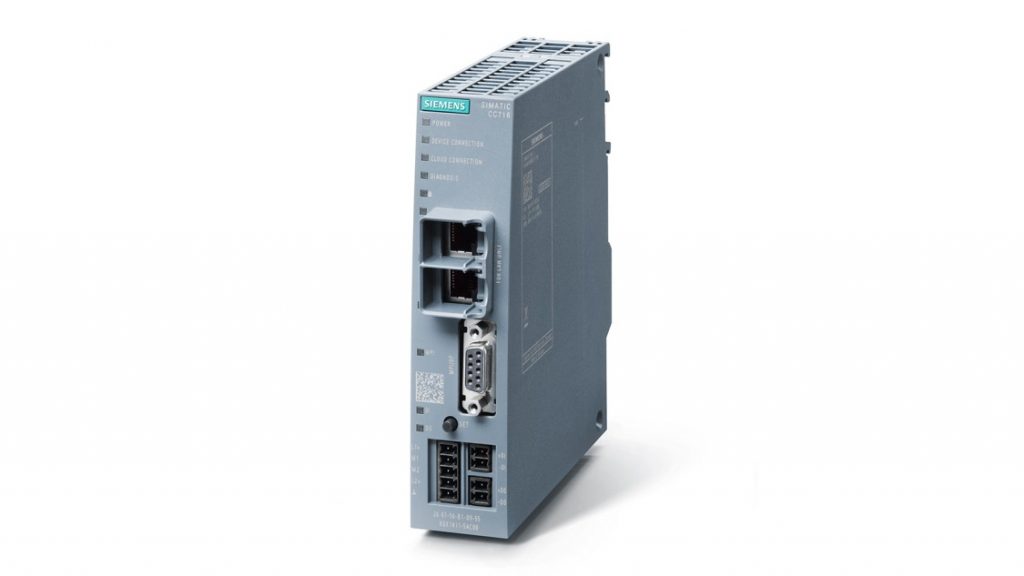1. EXECUTIVE SUMMARY
- CVSS v3 7.2
- ATTENTION: Exploitable remotely/low attack complexity
- Vendor: Siemens
- Equipment: SIMATIC Cloud Connect 7
- Vulnerabilities: Improper Neutralization of Special Elements used in a Command (‘Command Injection’), Use of Hard-coded Password, Improper Limitation of a Pathname to a Restricted Directory (‘Path Traversal’), Missing Standardized Error Handling Mechanism, Exposure of Sensitive Information to an Unauthorized Actor, Files or Directories Accessible to External Parties
2. RISK EVALUATION
Successful exploitation of these vulnerabilities could allow an attacker to execute arbitrary code.
3. TECHNICAL DETAILS
3.1 AFFECTED PRODUCTS
The following products from Siemens are affected:
- SIMATIC Cloud Connect 7 CC712 (6GK1411-1AC00): All versions V2.0 to V2.1
- SIMATIC Cloud Connect 7 CC712 (6GK1411-1AC00): All versions prior to V2.1
- SIMATIC Cloud Connect 7 CC716 (6GK1411-5AC00): All versions V2.0 to V2.1
- SIMATIC Cloud Connect 7 CC716 (6GK1411-5AC00): All versions prior to V2.1
3.2 VULNERABILITY OVERVIEW
3.2.1 IMPROPER NEUTRALIZATION OF SPECIAL ELEMENTS USED IN A COMMAND (‘COMMAND INJECTION’) CWE-77
The web-based management of affected devices does not properly validate user input, making it susceptible to command injection. This could allow an authenticated privileged remote attacker to execute arbitrary code with root privileges.
CVE-2023-28832 has been assigned to this vulnerability. A CVSS v3 base score of 7.2 has been assigned. The CVSS vector string is (CVSS:3.1/AV:N/AC:L/PR:H/UI:N/S:U/C:H/I:H/A:H).
3.2.2 USE OF HARD-CODED PASSWORD CWE-259
The affected device uses a hard-coded password to protect the diagnostic files. This could allow an authenticated attacker to access protected data.
CVE-2023-29103 has been assigned to this vulnerability. A CVSS v3 base score of 4.3 has been assigned. The CVSS vector string is (CVSS:3.1/AV:N/AC:L/PR:L/UI:N/S:U/C:L/I:N/A:N).
3.2.3 IMPROPER LIMITATION OF A PATHNAME TO A RESTRICTED DIRECTORY (‘PATH TRAVERSAL’) CWE-22
The filename in the upload feature of the web-based management of the affected device is susceptible to a path traversal vulnerability. This could allow an authenticated privileged remote attacker to overwrite any file the Linux user `ccuser` has write access to, or to download any file the Linux user `ccuser` has read-only access to.
CVE-2023-29104 has been assigned to this vulnerability. A CVSS v3 base score of 6.0 has been assigned. The CVSS vector string is (CVSS:3.1/AV:N/AC:L/PR:H/UI:N/S:U/C:L/I:L/A:H).
3.2.4 MISSING STANDARDIZED ERROR HANDLING MECHANISM CWE-544
The affected device is vulnerable to a denial-of-service condition while parsing a random (non-JSON) MQTT payload. This could allow an attacker who can manipulate the communication between the MQTT broker and the affected device to cause a denial-of-service condition.
CVE-2023-29105 has been assigned to this vulnerability. A CVSS v3 base score of 5.9 has been assigned. The CVSS vector string is (CVSS:3.1/AV:N/AC:H/PR:N/UI:N/S:U/C:N/I:N/A:H).
3.2.5 EXPOSURE OF SENSITIVE INFORMATION TO AN UNAUTHORIZED ACTOR CWE-200
The export endpoint is accessible via REST application programming interface (API) without authentication. This could allow an unauthenticated remote attacker to download the files available via the endpoint.
CVE-2023-29106 has been assigned to this vulnerability. A CVSS v3 base score of 5.3 has been assigned. The CVSS vector string is (CVSS:3.1/AV:N/AC:L/PR:N/UI:N/S:U/C:L/I:N/A:N).
3.2.6 FILES OR DIRECTORIES ACCESSIBLE TO EXTERNAL PARTIES CWE-552
The export endpoint discloses some undocumented files. This could allow an unauthenticated remote attacker to gain access to additional information resources.
CVE-2023-29107 has been assigned to this vulnerability. A CVSS v3 base score of 5.3 has been assigned. The CVSS vector string is (CVSS:3.1/AV:N/AC:L/PR:N/UI:N/S:U/C:L/I:N/A:N).
3.2.7 IMPROPER LIMITATION OF A PATHNAME TO A RESTRICTED DIRECTORY (‘PATH TRAVERSAL’) CWE-22
The filename in the upload feature of the web-based management of the affected device is susceptible to a path traversal vulnerability. This could allow an authenticated privileged remote attacker to write any file with the extension `.db`.
CVE-2023-29128 has been assigned to this vulnerability. A CVSS v3 base score of 3.8 has been assigned. The CVSS vector string is (CVSS:3.1/AV:N/AC:L/PR:H/UI:N/S:U/C:N/I:L/A:L).
3.3 BACKGROUND
- CRITICAL INFRASTRUCTURE SECTORS: Multiple
- COUNTRIES/AREAS DEPLOYED: Worldwide
- COMPANY HEADQUARTERS LOCATION: Germany
3.4 RESEARCHER
Siemens reported these vulnerabilities to CISA.
4. MITIGATIONS
Siemens has identified the following specific workarounds and mitigations users can apply to reduce risk:
- SIMATIC Cloud Connect 7 CC712 (6GK1411-1AC00): Update to V2.1 or later
- SIMATIC Cloud Connect 7 CC712 (6GK1411-1AC00): Update to V2.1 or later
- SIMATIC Cloud Connect 7 CC716 (6GK1411-5AC00): Update to V2.1 or later
- SIMATIC Cloud Connect 7 CC716 (6GK1411-5AC00): Update to V2.1 or later
As a general security measure, Siemens recommends protecting network access to devices with appropriate mechanisms. To operate the devices in a protected IT environment, Siemens recommends configuring the environment according to Siemens’ operational guidelines for industrial security and following recommendations in the product manuals.
Additional information on industrial security by Siemens can be found on the Siemens industrial security webpage.
For further inquiries on security vulnerabilities in Siemens products, users should contact the Siemens ProductCERT.
For more information, see the associated Siemens security advisory SSA-555292 in HTML and CSAF.
CISA recommends users take defensive measures to minimize the risk of exploitation of these vulnerabilities. Specifically, users should:
- Minimize network exposure for all control system devices and/or systems, and ensure they are not accessible from the Internet.
- Locate control system networks and remote devices behind firewalls and isolate them from business networks.
- When remote access is required, use secure methods, such as Virtual Private Networks (VPNs), recognizing VPNs may have vulnerabilities and should be updated to the most current version available. Also recognize VPN is only as secure as its connected devices.
CISA reminds organizations to perform proper impact analysis and risk assessment prior to deploying defensive measures.
CISA also provides a section for control systems security recommended practices on the ICS webpage at cisa.gov/ics. Several CISA products detailing cyber defense best practices are available for reading and download, including Improving Industrial Control Systems Cybersecurity with Defense-in-Depth Strategies.
Additional mitigation guidance and recommended practices are publicly available on the ICS webpage at cisa.gov/ics in the technical information paper, ICS-TIP-12-146-01B–Targeted Cyber Intrusion Detection and Mitigation Strategies.
Source:
https://www.cisa.gov/news-events/ics-advisories/icsa-23-131-04
